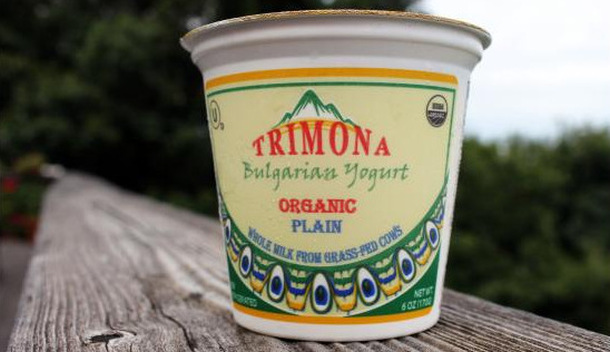Forget Greek yogurt, says Trimona Foods founder. The Bulgarians invented yogurt, and it's coming to America...

Developed by Atanas Valev - an agricultural engineer and yogurt enthusiast from Bulgaria who arrived in the US in 1991 - Trimona Bulgarian yogurt is made in a certified organic farmhouse creamery in New York State and is now available in around 300 stores in Chicago, New York, New Jersey, Connecticut and several other states.
Made with Valev’s custom-selected live cultures (which he carried in his suitcase from Bulgaria in jars) and organic whole milk from grass-fed cows (primarily of the Jersey and Guernsey variety), Trimona is not strained like Greek yogurt (the whey stays in), giving it a lighter, but creamier texture.
It contains no milk powders, thickeners or added sugar, has a lower pH (3.4-3.5 vs 4.0-4.9) than many other yogurts, and has a ‘tangy’ taste, says Valev: "There's nothing added, and nothing removed. It’s not thick and heavy like Greek yogurt, but it’s not watery either. It’s really creamy.”
It’s not thick and heavy like Greek yogurt - but it’s really creamy
Each 6oz pot still contains 6g of protein, but that’s a lot less than you’ll typically see in Greek yogurt, says Valev, who observes that most Americans are “not actually short of protein”, despite all the hype.
While there’s room for more than one yogurt on the market, much of what’s on offer doesn’t impress Valev, who says ditching whey means you’re also throwing away important minerals (calcium, potassium, magnesium), while yogurt made with low or non-fat milk means you miss out on fat-soluble vitamins A, D and E.
“I just want people to try it,” says Valev, who spent years making yogurt in his kitchen before finally resolving to see if the unsuspecting American public would enjoy it as much as he did.
He first test marketed it in Chicago in 2010 - “where the biggest Bulgarian population is” - and then secured deals with Whole Foods and other natural food stores in 2012 and 2013. In the next couple of years, he hopes to secure national distribution and is currently mulling over offers from angel investors in order to take the business to the next level.
But it was tough to start with, he admits. ”I spent eight months delivering cases of yogurt in my van from Long Island to individual retailers in Manhattan before I found distributors and when I’d talk to retailers about it, they liked the fact that it was organic and gluten-free, although the whole grass-fed thing was still new.
“But they said let’s just give it a shot. It’s the right time as people are now looking for the next thing [beyond Greek].”
It’s the right time as people are now looking for the next thing
Trimona yogurt, which is a finalist in Martha Stewart’s ‘American Made’ competition (click HERE), is tangy, but pleasantly so, he says.
“People are always asking whether I’m going to come up with flavors, and I might, but the best way to eat yogurt is plain, and then to add fruit or honey."
Meanwhile, some people that experience digestive problems when they eat dairy find they can enjoy Trimona, which Valev attributes to the fact that A1, a protein more prevalent in milk from high-producing Holstein cows - is much less prevalent in milk from Jersey and Guernsey cows, where the A2 protein predominates (although the science on this is still being debated).
I love doing the demos myself because I can tell people the story
But what about the 'Bulgarian yogurt' angle?
Do American consumers - and retail buyers - know that Bulgaria is regarded by many as the birthplace of yogurt as we know it today?
Probably not, says Valev, but consumers love hearing the story at his demos (he’s done more than 250 in the last couple of years).
“Obviously people have been eating fermented milk products including yogurt for thousands of years [and the word 'yogurt' comes from Turkish], but the culture now used as standard in yogurt production [Lactobacillus delbrueckii subsp. Bulgaricus] was discovered by a Bulgarian microbiologist Dr. Stamen Grigorov back in 1905.
“And his work was a big influence on [Nobel prize winner] Élie Metchnikoff [Ilya Ilyich Mechnikov], from the Pasteur Institute in Paris [who reckoned all that fermented dairy might have something to do with the longevity of Bulgarian peasants]. And this guy was the father of probiotics.”
As for America, it’s a melting pot, so why wouldn’t Bulgarian yogurt be a hit here, reasons Valev. “You’ve got people from all over the world here that have grown up with different kinds of dairy products.
“I love doing the demos myself because I can tell people the story of yogurt, and educate them about it. And if they try it, they love it."
Click HERE to vote in the American Made competition.


















